Carbon cycle in ecosystem pdf
The global carbon cycle consists of following steps• Photosynthesis Green plants in the presence of sunlight utilize CO2 in the process of photosynthesis and convert the inorganic carbon into organic matter (food) and release oxygen. oceans also contain large quantities of dissolved carbon dioxide. nutrients are neither imported nor exported from the biosphere. including human beings and
Chapter 8 Ecosystem and Carbon Cycle The global carbon cycle is the fluxes of carbon among four main reservoirs: fossil carbon, the atmosphere, the oceans, and the land surface.
The role of rainforests in the global carbon cycle is complex and little known. Plants and animals contain a great deal of carbon, which they take up as carbon dioxide (CO2) during growth and photosynthesis, and which they release to the atmosphere during respiration and decomposition.
carbon cycle models have been designed with varying degrees of aggregation with respect to ecosystem processes, compo- nents,and time steps.Models also vary widely in how much
A bottle ecosystem is an excellent way to study how populations of plants and animals interact (for example, in the carbon cycle). They are simple to build and are excellent for class projects and science fairs. We’ll start with the simplest one to build, the aquatic ecosystem.
Ecosystems Processes: Nutrient Cycles STRUCTURE 5.1 Introduction 5.2 Objectives 5.3 Nutrient Cycling: Linking the Biotic and Abiotic 5.4 Carbon Cycle 5.5 Role of Nutrient cycles in nature 5.6 Recapitulation 5.7 Conclusion 5.8 Unit-end exercise 5.9 The Teacher Section 5. BASICS OF ECOLOGY & LIFE SUPPORT SYSTEMS 47 5.1 We have seen how ecotones are links between ecosystems. …
carbon_cycle.pdf – Download as PDF File (.pdf), Text File (.txt) or read online. Scribd is the world’s largest social reading and publishing site. Search Search
The terrestrial biosphere plays an important role in the global carbon cycle. In the 1994 Intergovernmental Panel Assessment on Climate Change (IPCC), an effort was made to improve the
Carbon is another nutrient that all organisms need. In fact, it is the basic building block of all living things. Like water, carbon moves through an ecosystem in a cycle.
17/11/2005 · Urban ecosystems and the North American carbon cycle Urban areas also affect the carbon balance of terrestrial ecosystems directly through land conversion (e.g. Alig et al., 2002; Alig & Butler, 2004), and indirectly through effects of the urban ‘footprint’ on ecosystem processes. Here, we review recent research on the linkages between urbanization and the current and future car-bon
3 Carbon Cycle and Ecosystems Important Concerns: •Potential greenhouse warming (CO 2, CH 4) and ecosystem interactions with climate •Carbon management (e.g., capacity of plants,
EMBARGO: XXXX XX May XX:XX Central European Time (CET) Semi-arid ecosystems emerging role global in carbon cycle dynamics . Each year, terrestrial ecosystems a significant fraction of …
Title: THE CARBON CYCLE Grade and Subject: 8th-12th grades Number of Days for Completion of the Project: 0.5 Overarching Project Goals/Outcomes: Getting background knowledge for a scientific investigation. Students will be provided with a glossary page containing the definitions for the various components of the carbon cycle along with a diagram of the carbon cycle with blanks for fill in
(The plants get the carbon from the carbon dioxide in the air.) • Explain how a plant, a solid, can be made from the gas, carbon dioxide. (When the atoms recombine into …
A schematic of how animals can influence carbon exchange and storage in terrestrial and aquatic ecosystems. This depicts exchanges between terrestrial and atmospheric reservoirs and aquatic and atmospheric reservoirs.
156 concentrations have risen steeply since 1800, from a nearly steady level of about 278 to 389 ppm in 2010, increasing at 2 ppm year 1 (2001Ð2010 average).
a) Carbon cycle: it is the circulation of carbon atom between the carbon dioxide in the air and the complex carbon compounds (carbohydrates, proteins and lipids) in the tissues of
forest ecosystems forest management and the global carbon cycle Download forest ecosystems forest management and the global carbon cycle or read online here in PDF or EPUB.
Ecosystem Disturbance Carbon and Climate Science
https://youtube.com/watch?v=F-UA-wFdqDo
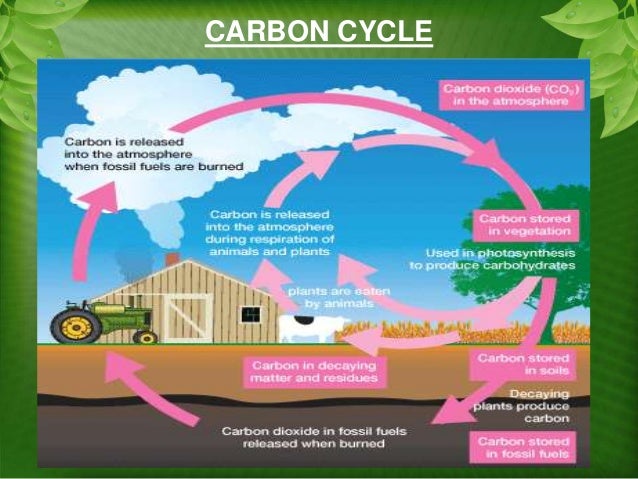
Semi-arid ecosystems emerging role global in carbon cycle
can cycle carbon among various pools within ecosystems and eventually releases it back to the atmosphere. Viewing the Earth as a whole, individual cycles like this are linked to others involving oceans, rocks, etc. on a range of spatial and temporal scales to form an integrated global carbon cycle (Figure 2). On the shortest time scales, of seconds to minutes, plants take carbon out of the
USGCRP, 2018: Second State of the Carbon Cycle Report (SOCCR2): A Sustained Assessment Report [Cavallaro, N., G. Shrestha, ecosystem carbon removal can be attributed to North American ecosystems. Whether the land and ocean will continue to absorb similar amounts of carbon in future years is unclear, since changes in climate, human activities, and ecosystem responses may alter …
“Photosynthesis and cellular respiration are important components of the carbon cycle, in which carbon is exchanged among the biosphere, atmosphere, oceans and geosphere through chemical, physical, geological, and biological processes.”
Carbon Flows in Ecosystems—Ecosystem Processes (PDF, 2111 kb) Plant Productivity, Partitioning, Respiration, Recalcitrance, Plant-Soil Interactions, and Carbon Biosequestration Carbon Flows …
The carbon cycle in an ecosystem usually initiates when plants fix CO 2 from the air and convert it to organic carbon compounds through photosynthesis (Fig. 2.1). Some of the organic carbon compounds are used to grow plant tissues. Some are broken down to supply the plants with energy. During this
The Carbon Cycle Overview of the Carbon Cycle The movement of carbon from one area to another is the basis for the carbon cycle. Carbon is important for all life on Earth. All living things are made up of carbon. Carbon is produced by both natural and human-made (anthropogenic) sources. Carbon Cycle Page 2 Nature’s Carbon Sources Carbon is found in the atmosphere mostly as carbon dioxide
Wetlands play an important role in the landscape in Australia, including in the cycling of water, carbon and nutrients. They provide ecosystem services including production of food
The oxygen cycle is interconnected with the carbon cycle. In the simple example of the oxygen cycle shown below, you can see how oxygen is used and cycled by plants and animals. Plants are the main creators of oxygen in the atmosphere through the process of photosynthesis .
The carbon cycle is very important to all ecosystems, and ultimately life on earth. The carbon cycle is critical to the food chain. The carbon cycle is critical to the food chain. Living tissue contains carbon, because they contain proteins, fats and carbohydrates.
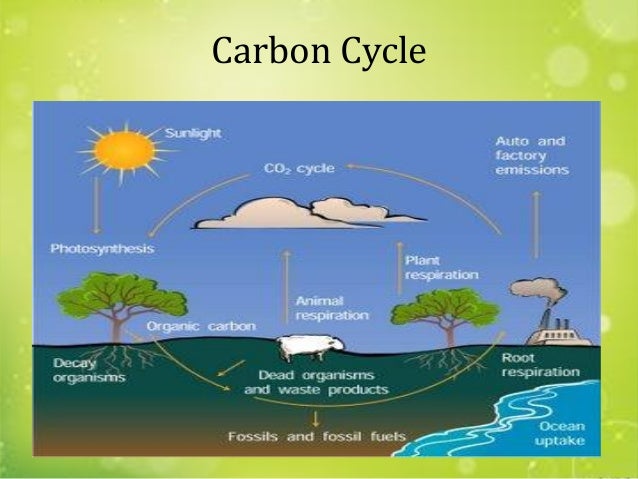
3 • T erreSTrial c arbOn F lOw Carbon Flows in Ecosystems— Ecosystem Processes Plant Productivity, Partitioning, Respiration, Recalcitrance, Plant-Soil Interactions,
The cycle of carbon between abiotic and biotic systems is known as the carbon cycle. Carbon dioxide is found both in the air and water, and it is the main source of carbon. The content of carbon dioxide in the air is 0.03% and it remains constant.
2 Carbon as a characteristic of ecosystem asset condition (Section 4.3 and Tables 4.3 and 4.4) 7. This note outlines the basic concepts of carbon in the SEEA-EEA and provides information on
Abstract. Recent evidence shows that warm semi-arid ecosystems are playing a disproportionate role in the interannual variability and greening trend of the global carbon cycle given their mean lower productivity when compared with other biomes (Ahlström et al. 2015 Science, 348, 895).
The main positive biotic regulation of carbon cycle, according to the Les Chatellier’s principle, will be performed by broadleaf-coniferous forests of high plains in the nemoral-forest sub-zone and in the southern belt of sub -taiga zone.
Semi-arid ecosystems emerging role global in carbon cycle dynamics . Each year, terrestrial ecosystems a significant fraction of take up anthropogenic CO 2 emissions, thereby slowing the increase in greenhouse gases and global warming. In 2011 global land carbon uptake was estimated , to be a record breaking 40% of annual fossil fuel and landcover change CO-2 emissions. Research …
Nitrogen Cycling in Ecosystems In order to have a firm understanding of how nitrogen impacts our ecosystems, it is important that students fully understand how the various forms of nitrogen cycle …
Carbon Cycle and Ecosystems. Knowledge of the interactions of global biogeochemical cycles and terrestrial and marine ecosystems with global environmental change and their implications for the Earth’s climate, productivity, and natural resources is needed to understand and protect our home planet.
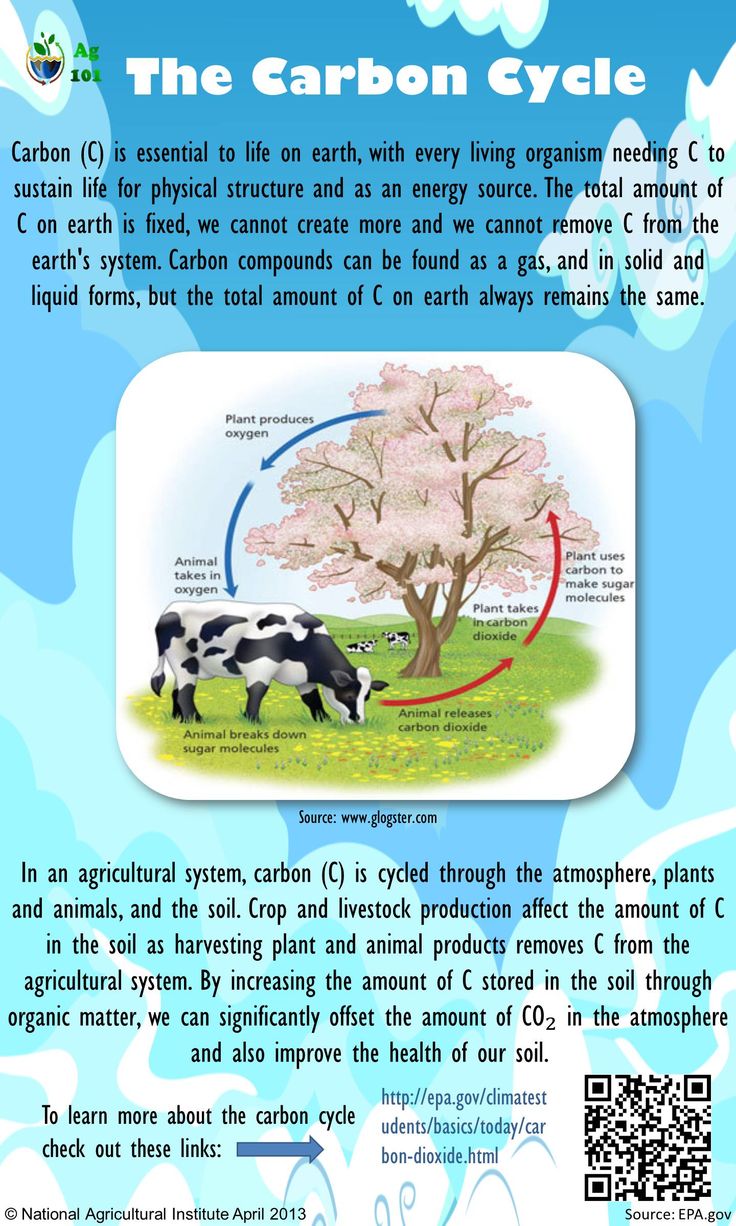
carbon cycling in arctic marine ecosystems Download carbon cycling in arctic marine ecosystems or read online here in PDF or EPUB. Please click button to get carbon cycling in arctic marine ecosystems book now.
The ideal candidate will have a particular expertise in either one, or both, of a) remote sensing applications in ecosystem analysis and b) ecosystem carbon cycle modeling. Candidates with strong numerical and analytical skills, along with proficiency in scientific programming, are preferred.
variability of the global carbon cycle Benjamin Poulter 1,2 , David Frank 3,4 , Philippe Ciais 2 , Ranga B. Myneni 5 , Niels Andela 6 , Jian Bi 5 , Gregoire Broquet 2 , Josep G. Canadell 7 , Frederic Chevallier 2 , Yi Y. Liu 8 , Steven W. Running 9 , Stephen Sitch 10 & Guido R. van der Werf 6
Ecosystems also cycle matter such as the nutrients in a plants leaves between their biotic and abiotic parts. The processes that drive these cycles are interactions between the ecosystem components. Evaporation is an interaction between the hydrosphere and the atmosphere, taking heat out of the ecosystem. The process of photosynthesis is a interaction between the atmosphere, the …
in an ecosystem and how oxygen cycles via photosynthesis and respiration. Diagram the cycling of carbon, nitrogen, and phosphorus in an ecosystem. 2 P a g e Teaching Lesson 4 Lesson 4 Lesson Outline1 I. Introduction Introduce the lesson on biogeochemical cycling by playing a brief game with your students. First, ask students to recall the concept of the ocean as a carbon sink. They should
on soil type. For example, soils unable to absorb and retain moisture may be 4 • Ecosystem and Plant Response Key Research Questions 1. What are the abiotic and
The terrestrial carbon cycle provides a sink for about 25% of the anthropogenic carbon emissions that increase atmospheric CO 2. Comprehensive models based on a detailed understanding of this carbon sink are needed to inform mitigation strategies aimed at stabilizing climate and adaptation strategies to minimize biospheric impacts.
https://youtube.com/watch?v=ISjjjqvZPg4
Building a Bottle Ecosystem The Carbon Cycle
ECOSYSTEMS AND THE CARBON CYCLE 79 ecosystems will require global-scale long-term observations Long-term Ecosystem Record Reveals from carefully calibrated satelliteborne sensors. Atmosphere-Biosphere Coupling Early carbon cycle models that were used to investi- Although early studies established that red and near- gate sources and sinks of anthropogenic CO2 ignored the …
Florian (Max) is an analytical geochemist by training, working on geogenic and biogenic carbon gas emissions, from ground and space based observations.
The carbon cycle is the fluxes of carbon among four main reservoirs: fossil carbon, the atmosphere, the oceans, and the terrestrial biosphere. Emissions of fossil carbon during the 1980s averaged 5.5 Gt …
ecosystems, where nutrients may be greatly concentrated in living biomass (such as tropical rainforests) or in humus and soil organic matter (such as tundra ecosystems) (Lavelle and Spain 2001).
The Carbon Cycle eschooltoday
The atmospheric carbon dioxide is virtually the only source of carbon which is the basic constituent of all the organic compounds. This gas is used by all plants in photosynthesis and the end products (organic substances) of this complex process are used in two ways.
Keywords: global carbon cycle, semi-arid ecosystems, Australia, interannual variability, net carbon uptake, net primary production, precipitationanomalies Abstract
This page was last edited on 10 November 2018, at 03:10. All structured data from the main, property and lexeme namespaces is available under the Creative Commons CC0 License; text in the other namespaces is available under the Creative Commons Attribution-ShareAlike License; …
Science for Kids Oxygen Cycle Ducksters

Animating the Carbon Cycle Wildlife Ecology and Global
https://youtube.com/watch?v=sQK3Yr4Sc_k
H. Rainforest role in the carbon cycle « Rainforest
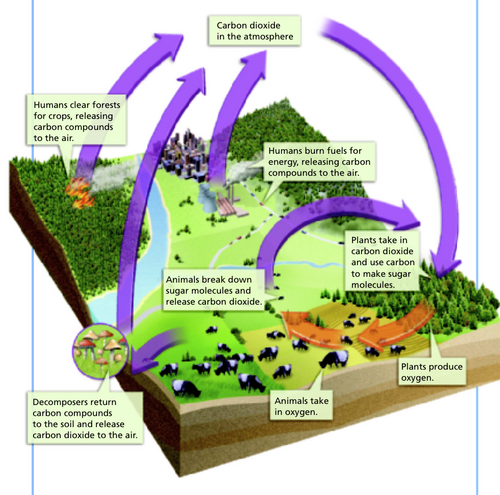
Contribution of semi-arid ecosystems to interannual
Ecosystem and Carbon Cycle Home – Springer

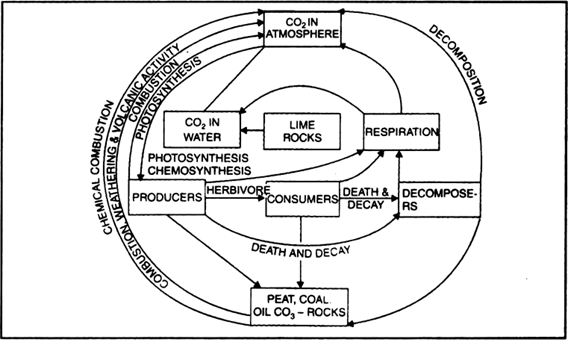
https://youtube.com/watch?v=sQK3Yr4Sc_k
Carbon Cycle an overview ScienceDirect Topics
Carbon Cycle & Ecosystems NASA
Carbon and Ecosystem accounting TEEB
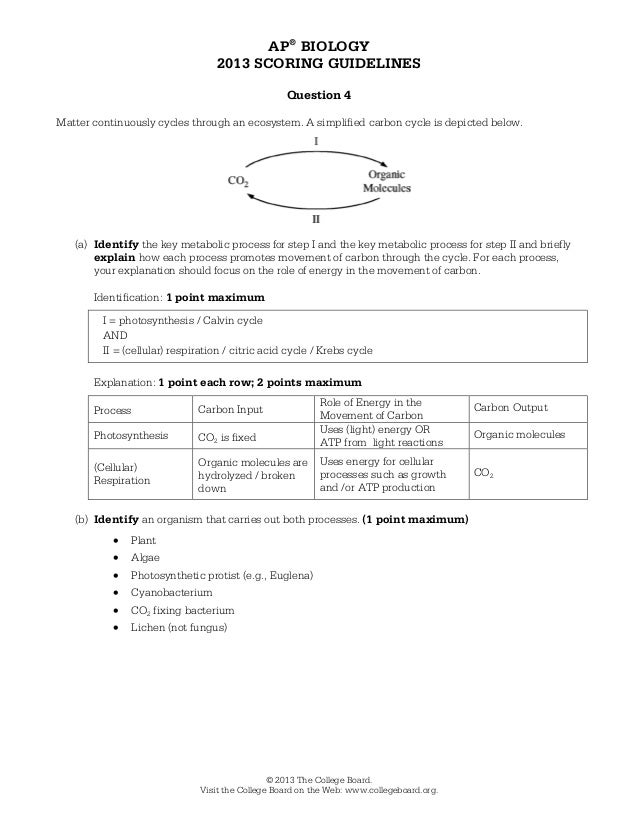
Process contributions of Australian ecosystems to
Forest Ecosystems Forest Management And The Global Carbon

The carbon cycle is the fluxes of carbon among four main reservoirs: fossil carbon, the atmosphere, the oceans, and the terrestrial biosphere. Emissions of fossil carbon during the 1980s averaged 5.5 Gt …
Carbon Cycle and Ecosystems Wikidata
Terrestrial ecosystems and the carbon cycle SCHIMEL